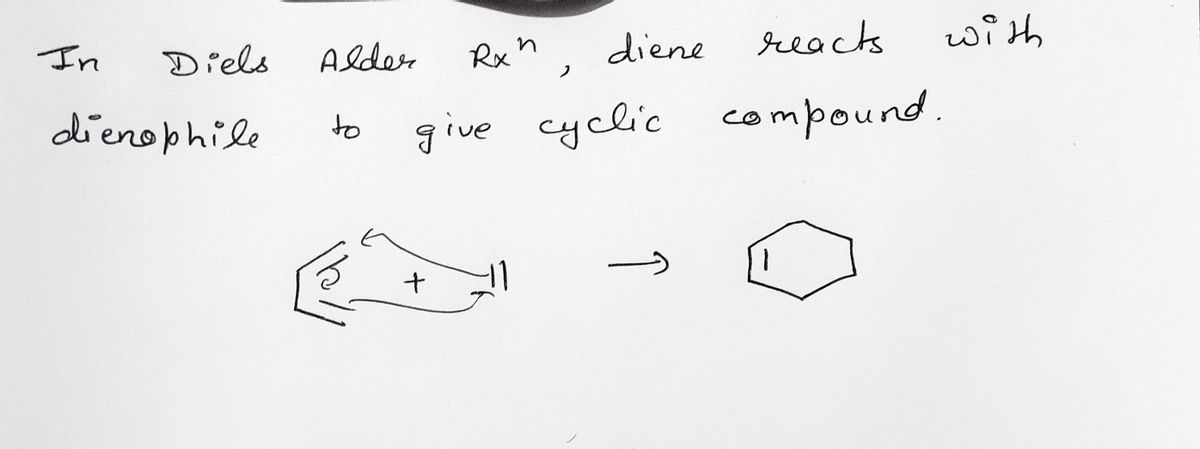Chemistry
10th Edition
ISBN:9781305957404
Author:Steven S. Zumdahl, Susan A. Zumdahl, Donald J. DeCoste
Publisher:Steven S. Zumdahl, Susan A. Zumdahl, Donald J. DeCoste
Chapter1: Chemical Foundations
Section: Chapter Questions
Problem 1RQ: Define and explain the differences between the following terms. a. law and theory b. theory and...
Related questions
Question
100%
Can someone show me the mechanisms for how the product of the circled reaction formed?

Transcribed Image Text:The image contains a chemical reaction scheme and notes involving benzene derivatives and potassium amide (KNH₂).
### Reaction Scheme:
1. **Reactants:**
- A benzene ring with a chlorine (Cl) substituent is labeled as the starting compound.
- KNH₂ is shown as the reagent used in the reaction.
2. **Intermediate/Products:**
- An arrow points from the reactant to a benzene ring with an NH₂ group, indicating a substitution of Cl with NH₂.
- A question mark and the number "2" are placed next to the NH₂ product, suggesting uncertainty or a second step.
3. **Second Diagram:**
- An additional reaction scheme is depicted with a benzene ring with a Cl substituent reacting in the presence of KNH₂ in ammonia (NH₃).
- The product is represented as a bicyclic structure, which includes a fused ring system.
### Handwritten Notes:
- The word "practice" is noted near the top.
- "Activator, o, p" is written next to the transformations, hinting at ortho- and para-activation or directing effects.
- The notes suggest a practice problem or mechanism, possibly for educational purposes in understanding aromatic substitution reactions.
Expert Solution
Step 1

Step by step
Solved in 2 steps with 2 images

Knowledge Booster
Learn more about
Need a deep-dive on the concept behind this application? Look no further. Learn more about this topic, chemistry and related others by exploring similar questions and additional content below.Recommended textbooks for you

Chemistry
Chemistry
ISBN:
9781305957404
Author:
Steven S. Zumdahl, Susan A. Zumdahl, Donald J. DeCoste
Publisher:
Cengage Learning

Chemistry
Chemistry
ISBN:
9781259911156
Author:
Raymond Chang Dr., Jason Overby Professor
Publisher:
McGraw-Hill Education

Principles of Instrumental Analysis
Chemistry
ISBN:
9781305577213
Author:
Douglas A. Skoog, F. James Holler, Stanley R. Crouch
Publisher:
Cengage Learning

Chemistry
Chemistry
ISBN:
9781305957404
Author:
Steven S. Zumdahl, Susan A. Zumdahl, Donald J. DeCoste
Publisher:
Cengage Learning

Chemistry
Chemistry
ISBN:
9781259911156
Author:
Raymond Chang Dr., Jason Overby Professor
Publisher:
McGraw-Hill Education

Principles of Instrumental Analysis
Chemistry
ISBN:
9781305577213
Author:
Douglas A. Skoog, F. James Holler, Stanley R. Crouch
Publisher:
Cengage Learning

Organic Chemistry
Chemistry
ISBN:
9780078021558
Author:
Janice Gorzynski Smith Dr.
Publisher:
McGraw-Hill Education

Chemistry: Principles and Reactions
Chemistry
ISBN:
9781305079373
Author:
William L. Masterton, Cecile N. Hurley
Publisher:
Cengage Learning

Elementary Principles of Chemical Processes, Bind…
Chemistry
ISBN:
9781118431221
Author:
Richard M. Felder, Ronald W. Rousseau, Lisa G. Bullard
Publisher:
WILEY